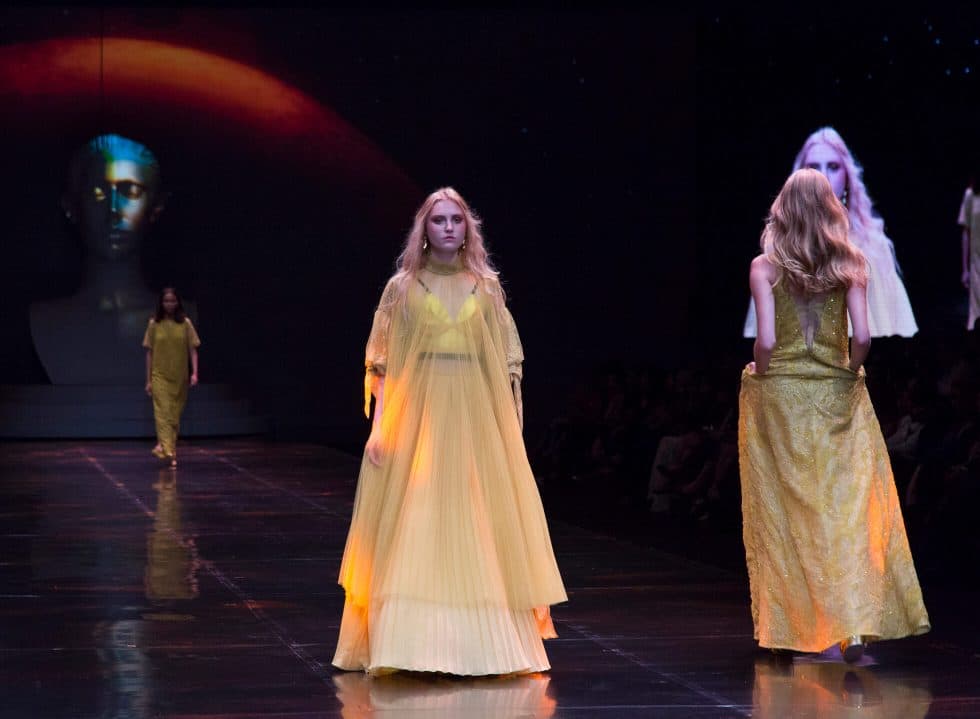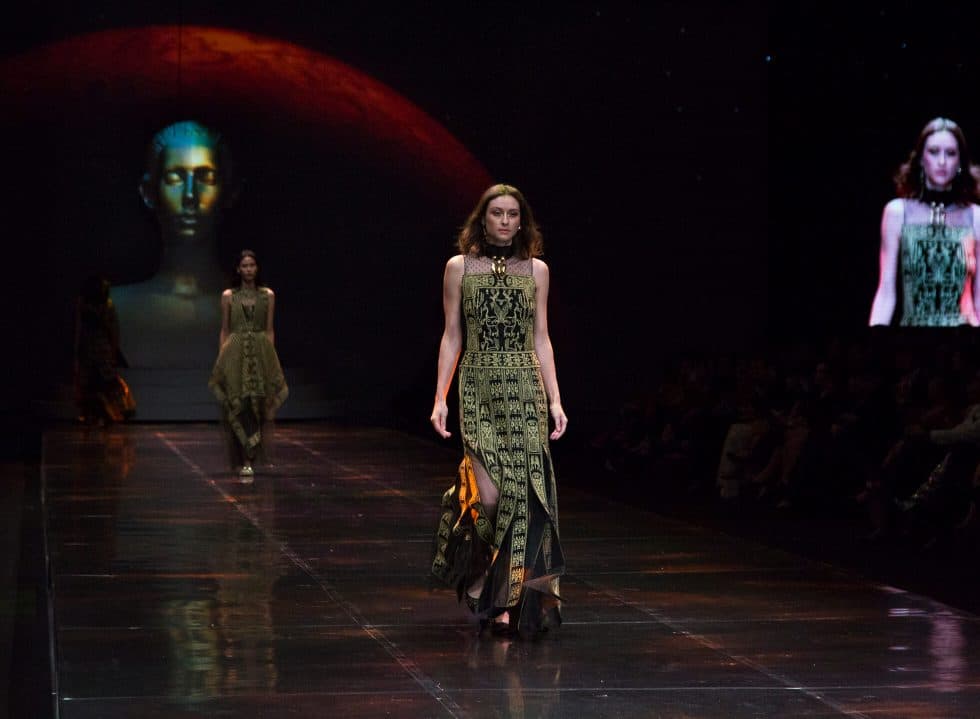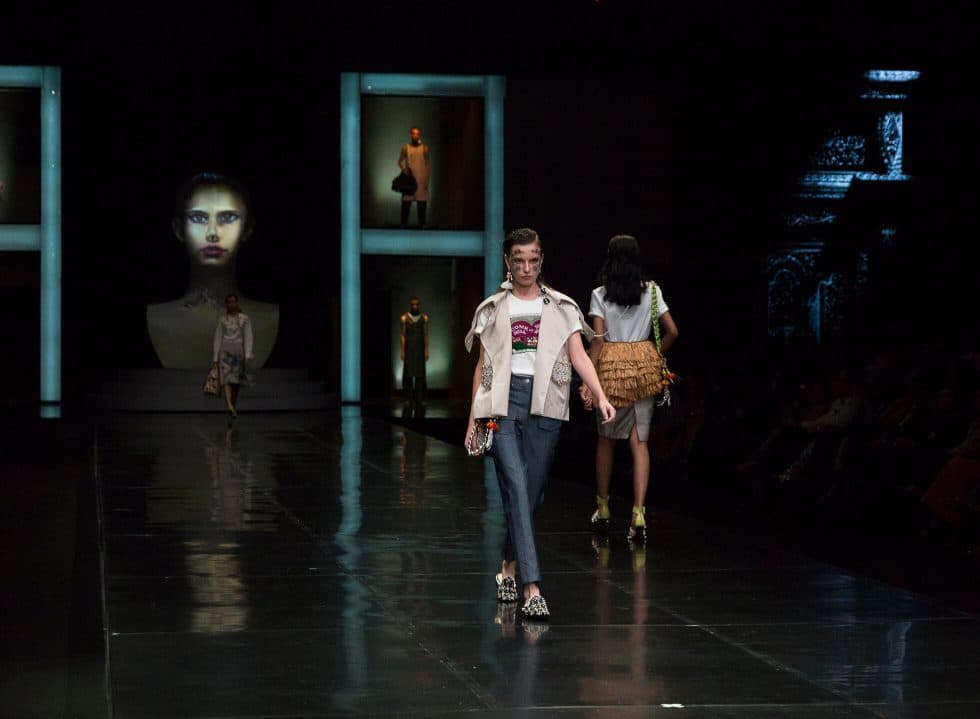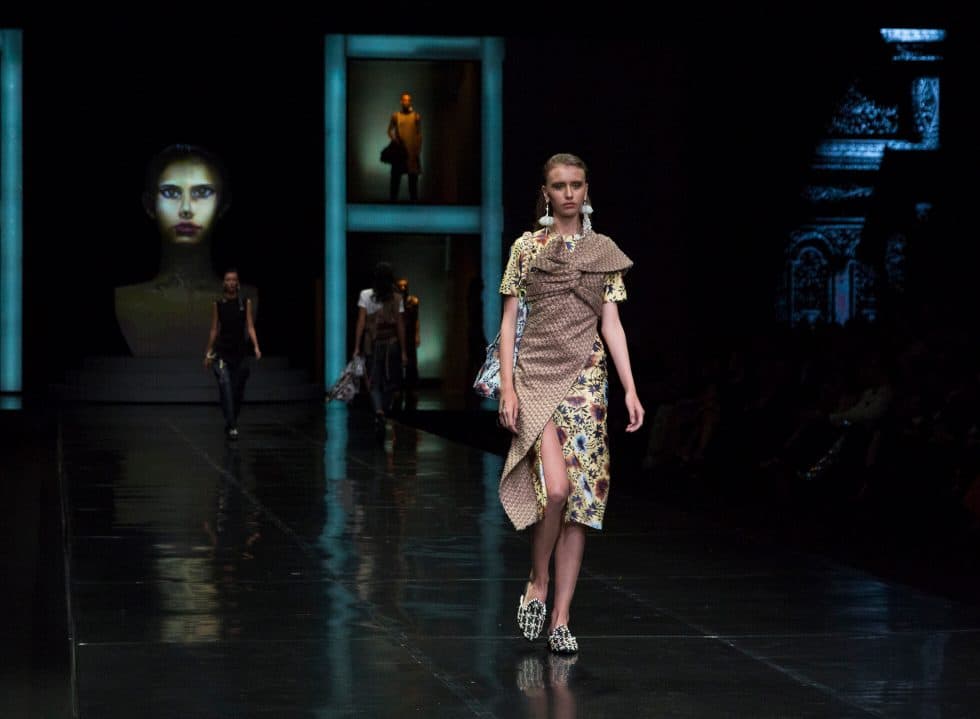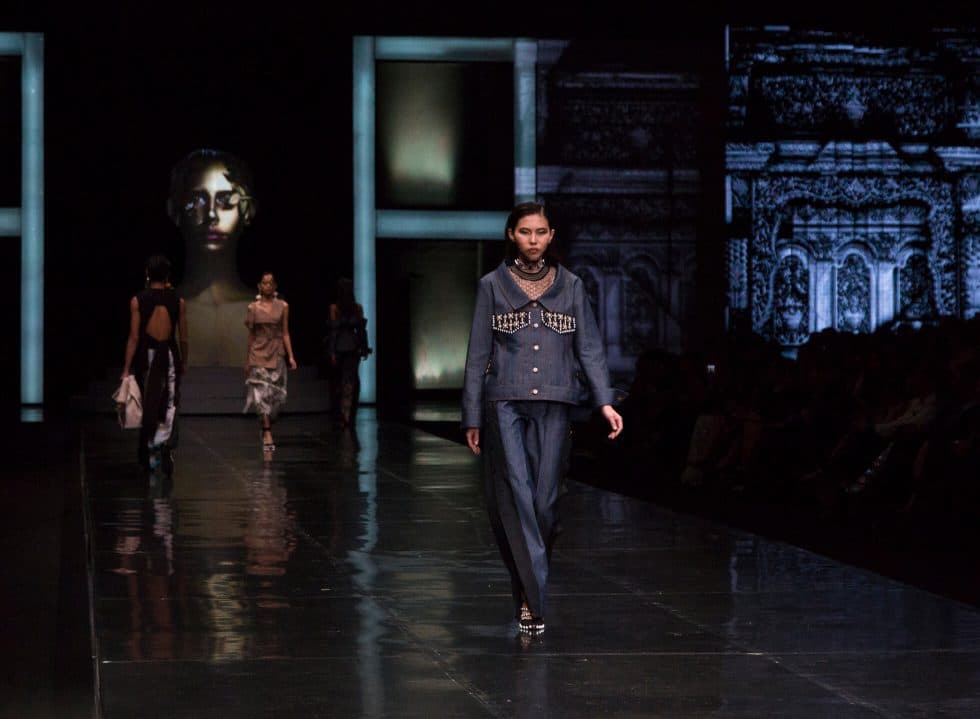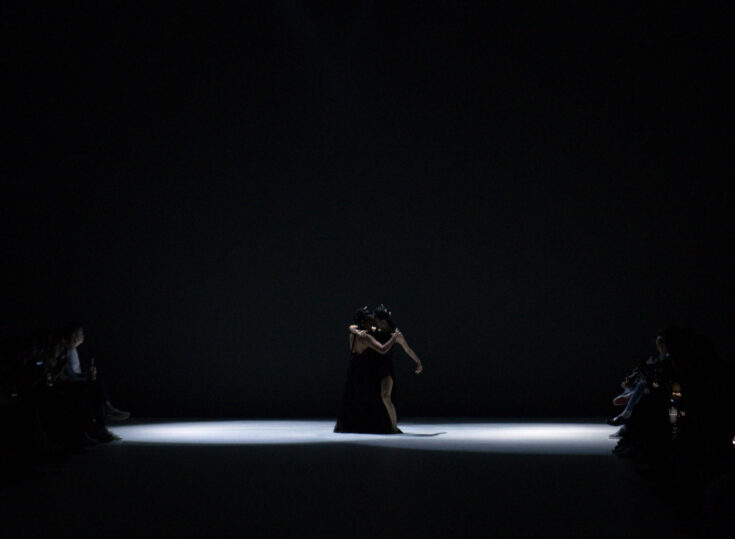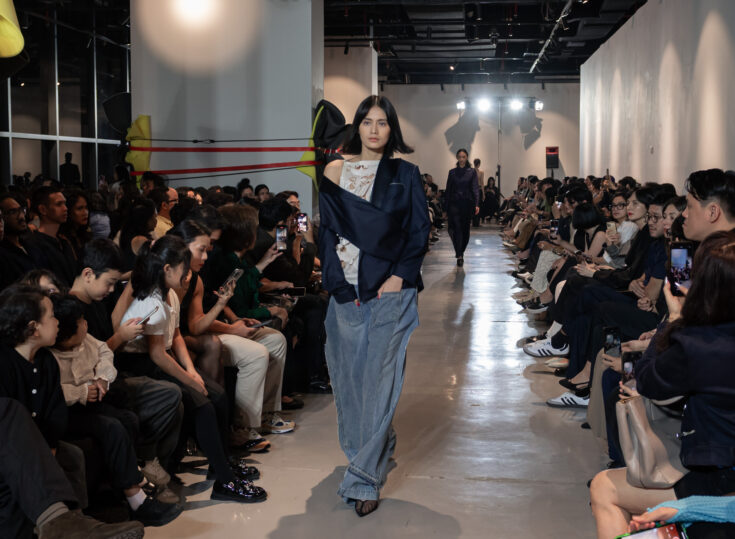On Wednesday evening, makeup brand LAKMÉ threw the social event of year, in conjunction with its product launch, through a runway show that put together four of the big names from the local fashion scene. A clever move. Even if you’re a fashion enthusiast that subscribes to the no-makeup movement or have yet to discover the brand, LAKMÉ has certainly worked its way into your consciousness. Over at the ballroom of Ritz-Carlton Hotel, the makeup brand not only succeeded in putting Saptodjojokartiko, TOTON, KRATON Auguste Soesastro and Mel Ahyar on one stage, but also managed to rope in its ambassador, the famous singer-songwriter Agnez Mo, for a brief parade after the end of all the shows.
Fortunately, even the presence of the megawatt celebrity can’t steal the thunder from the collections shown by the four noted designers. Over at Saptodjojokartiko’s Instagram account, it described the collection as “a young lady on her quest of spiritual notions about universe and existence”. It’s hard to tell just what kind of hypothesis she managed to come up with wearing those beautifully embroidered evening dresses.
Frankly, Sapto Djojokartiko didn’t need a grandiose backstory to justify this collection, because they speak for themselves. While he continued to showcase his love for embellishment, Sapto threw pleats into the mix with a heavy focus on sleepwear. Models came out in light and ethereal dresses as if they had just waltzed out of the bedroom and straight to the runway.
But the second half of the collection carried more ‘weight’ where the dresses were marked with elements from Roman soldier’s armour. The latter is obvious from the bottom half of the dress where it is spliced into dangling strips. There’s a satisfaction in watching the floaty pieces gradually gave way to leaner and structured dresses. It is this duality of lightness and heaviness gave the collection an engaging perspective instead of the unnecessary backstory that didn’t make much sense.
It’s hard to shake off the political undertones that bubbled on the surface of TOTON’s collection. The most noticeable clue is the t-shirt that featured flower board print. There’s one with the text “Pahit (Bitter)” and another “Come Hell or High Water”. Toton Januar is clearly affected by the political turmoil that threatened to tear away at the country’s fabric of solidarity earlier this year.
Despite the sombre message, the attitude felt free, the same attitude that gave his S/S15 such a kick. But this time round, Toton went further and embraced the chaos. It’s as if the designer has blew up the entire collection and put them back together again. Perhaps, in a way, the collection subconsciously represented a healing process.
Nevertheless, there were many great pieces to pick out here. The aforementioned t-shirt was paired with skirt with fringe that resembled thatched roof. A dress appeared as if it was salvaged together by combining two different batik dresses and securely tied at the front. Raw denim transformed into formal jacket with low collar and embroidered pocket flaps.
Luckily, the collection did not get lost within its own message. The looks were accompanied by glorious bags and accessories that will certainly be snapped up once they hit the sales floor. What’s more, this is the first time that Toton sent out male models for his collection, where one of them came out in a coat with an open back. Granted, these are actually womenswear and the designer was most likely using it as a way to highlight the tailoring. But he should definitely consider adding menswear in near future. All in all, the collection was made memorable because of Toton’s daring move to use fashion as a medium for an important cause.
Auguste Soesastro is another designer that employs his creations to convey his principle. Since the founding of KRATON, he has been focusing on “delivering understated but authentic luxury in an increasingly mass-produced world”. That’s why his works are more concerned with the idea of modern living, instead of modern dressing. Auguste is the kind of designer that will spend years perfecting a cut or hemline of a dress. You know they are made to last.
Some will find the collection familiar. Around this time last year, Auguste’s creations were put on display over at Dia.Lo.Gue through an exhibition named “Architecture of Cloth”. And this collection showed the continuation of Auguste’s quest in combining architecture, fashion and art under one similar thread. There’s something satisfying in the way the fragmented pieces were assembled together, forming clean symmetrical lines that resembled contemporary architecture.
Auguste is clearly not bothered with delivering new styles just for the sake of appeasing the unquenchable appetite for the new. And it is this stubborn, yet ultimately winning, commitment that continues to imbue Auguste’s works with a clear focus and direction.
Mel Ahyar loves pretty things. There’s no doubt about it. And what convey prettiness better than delicate flowers and the ideas of nymphs and fairies? But loyal fans of Mel’s eponymous label should know this by now. The collection was filled with sweet, lovable dresses and gowns that are applied liberally with appliqué embroidery of flowers and cutesy creatures of the forest.
Nonetheless, Mel did not limit the inspiration from nature to just dainty things. The sweet saccharine dresses were ‘toughened up’ through the idea of geographic landscapes. To wit, a strapless gown came with layered gaping holes that remind one of rock formations. In another dress, a line of red gash ran from the shoulder and down the body to reveal an exploding magma of, what appeared to be leaf or feather details.
If there is a bone to pick with this collection, is that it’s hard not to view these dresses as pieces to be displayed, instead of being worn. And ultimately, the collection was just as what Mel intended to be: a fairy tale. This collection could use a little dose of reality.















